The vast majority of the world’s very best savory dishes begin with a handful of diced onions! Onions are one of the most versatile cooking vegetables, and that versatility makes them a great option for growing in the garden. Homegrown onions are easy to grow, store great, and have an incredible sweetness that’s hard to find in store-bought onions!
The biggest key to onion success is nailing down the timing—and we’re going to teach you everything you need to know to get it right the first time.
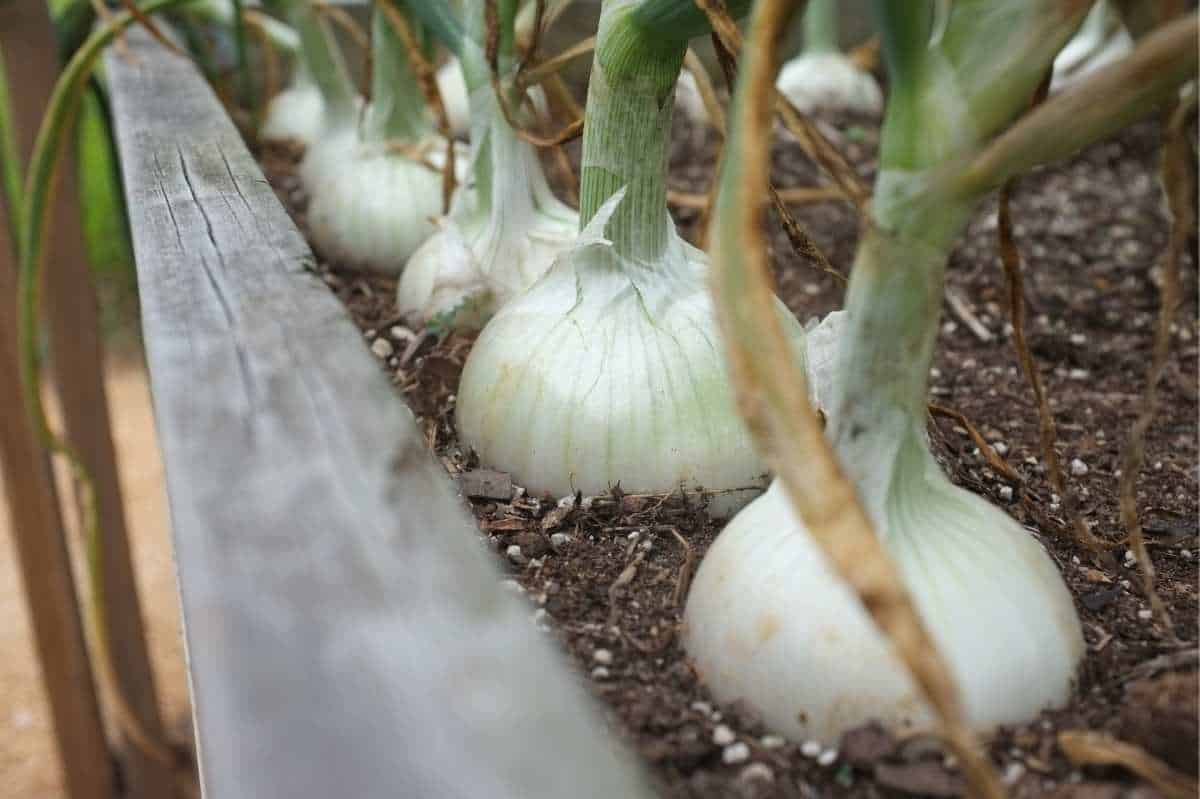
Table of Contents
What is the best time of year to plant onions?
As far as temperatures go, onions (Allium cepa) are a hardy plant that can grow almost any time of year. Most folks plant them either in early spring for an early summer harvest, or many plant seeds in late summer or early fall for an overwintered spring harvest.
Far and away, the most important thing to know when nailing the timing for onion planting is day length for bulbing. In order to form proper bulbs, onions need a certain number of hours of daylight in a growing season. This means, even if your greenhouse stays a toasty 80°F all winter long, you won’t be able to grow bulbing onions in there unless you supplement with grow lights to reach the number of daylight hours that are similar to summer.
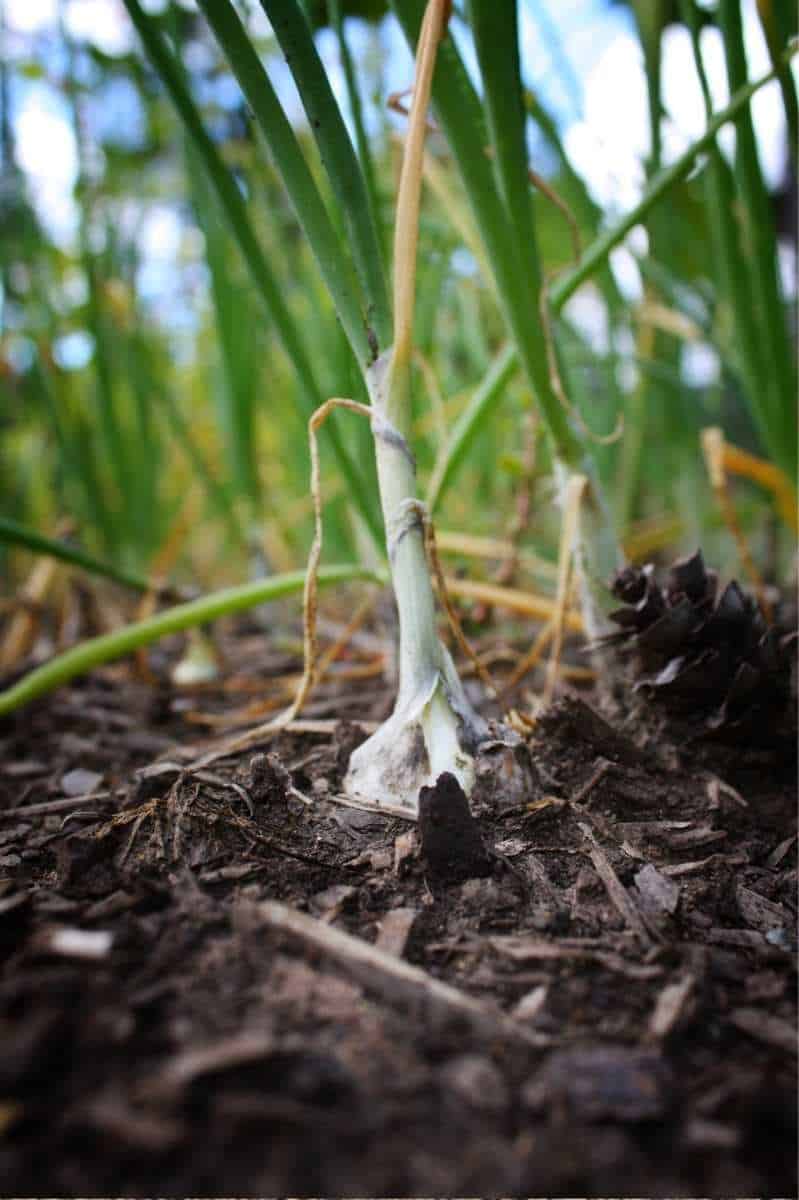
Growfully Protip
If you aren’t concerned about bulbing (AKA: you want to eat green onions), you can grow onions almost any time of year without concern for day length.
Onions are separated into three categories: short-day onions, long-day onions, and intermediate-day onions (AKA: day-neutral onions). As you get closer to the equator, day lengths in the summer get shorter—requiring specific short-day onion varieties—like Texas Early White. Closer to the poles, the summer days are longer, and you can grow long-day onions— like Walla Walla or Yellow Sweet Spanish. In the middle, you can experiment with either or try out intermediate-day varieties—like Early Yellow Globe.
You can plant onions almost any time of year (especially if growing for green onions), but your timing will impact the size of onions you harvest and when they are harvested. Onions will get the signal to form bulbs when the day length in your area is getting the correct number of daylight hours for the variety. In general, this is around:
- 10-12 daylight hours for short-day onions (for Southern latitudes)
- 12-14 daylight hours for intermediate-day varieties (in the middle)
- 14-16 daylight hours for long-day varieties (for Northern latitudes)
The size of a finished onion bulb is directly related to the size and number of green onion leaves on the top part of the plant (those become the layers of your bulb onion). So your goal is to get as many leaves growing on an onion plant before the signal to bulb starts in your area. This means you want to start your onions as early as possible. For some, this means planting starts (AKA: transplants) or sets in the ground in early spring. For others, this can mean planting seeds, starts, or sets in the ground in late summer or early fall for overwintering.

How late in the year can you plant onions?
The longer you delay planting onions in the spring, the smaller your onion plants will be when they begin to bulb, which means smaller onions. If you wait too long, the plants will not have enough time to mature before bulbing begins.
We recommend planting onion starts (transplants) or sets in the ground no later than a month before your last frost for spring plantings. For fall plantings for a spring harvest next year, you can plant seeds in late summer (6-8 weeks before your first frost) or plant seeds or starts in early fall (4-6 weeks before your first frost).
Do onions need full sun?
Onions require full, direct sunlight to not only grow, but also to signal the bulbing process. In the hottest of climates, onions might suffer from sunscald in full sun. Sunscald is heat damage (basically cooking the onion!) thanks to hot summer sun. Sunscald typically happens after an onion is harvested, but can occasionally happen when growing in dark soils. To prevent this, keep the soil moist, and utilize mulch (like straw or pine shavings) to regulate soil temperature.

Should I plant onions from seed, sets, or transplants?
There are three ways you can get your onion plants going, and all of them work really well! Like everything else with onions, choosing which way is right for you depends mostly on your timing:
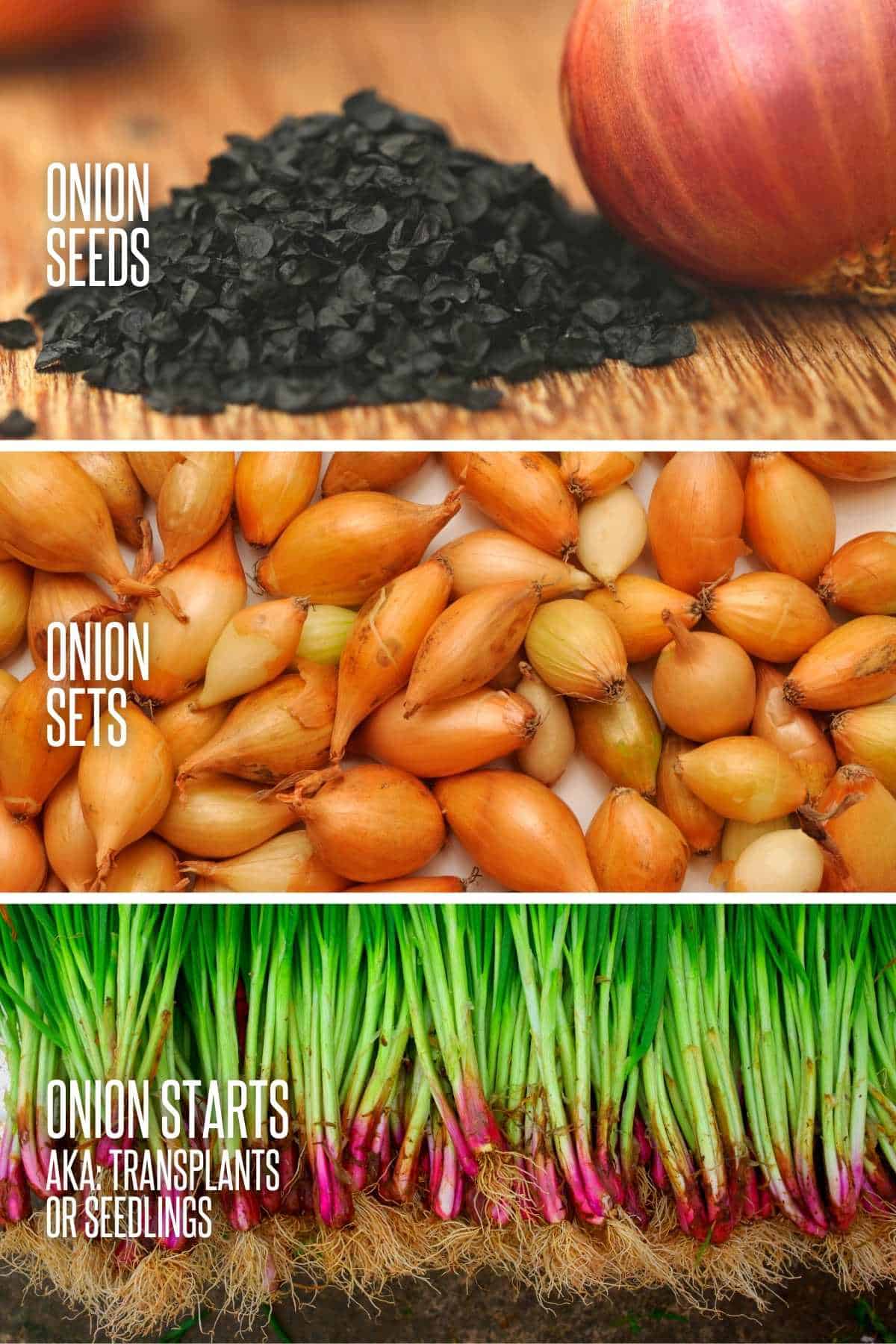
- Onion Seed: Starting onions from seed is relatively easy, although they are incredibly slow-growing and typically require 12-16 weeks of time from sowing to transplanting. Your patience is rewarded though because with seed onions, you can grow a wider selection of onion varieties and grow onions much more affordably.
- Onion Sets: Sets are dried, immature onion bulbs—similar to what you’d buy from your grocery store. You’ll typically see them at garden stores and big-box stores, but you can also purchase sets online. These are easy to work with, get growing relatively quickly, and are pretty affordable. The hangup here is that you are limited in varieties—most stores only carry one or two onion set varieties, and some aren’t even labeled with the exact varieties, so it might be hard to nail down the exact right day-length. A local store around here just has giant bulk bins with onion sets each year just labeled “red onions,” “white onions,” and “yellow onions” and that’s all you know about the onions you buy!
- Onion Starts or Transplants: You can also plant already growing onion transplants—either from ones you grew yourself or purchased. This is the easiest and fastest way to get onions growing, and it’s what we recommend to plant if you’re running a little behind on your planting schedule. When purchasing starts, the same issue of limited availability that you have with onion sets applies. Purchased onion transplants also tend to be the most expensive of the three.

How many days do onions take to grow?
Onions are a long crop, and they require 100-120 days from seed to harvest of a full bulb. From transplants or sets, you harvest in 60-80 days.
Growfully Protip
Green onion harvest can begin as soon as the onion plants are large enough to use. For sets and starts, that can be as early as 2-4 weeks after planting.
Do you soak onion sets before planting?
You don’t have to soak onion sets before planting, however, moisture is what signals to the dried bulb that it’s time to “wake up” and sprout. This moisture can easily come from rain and soil moisture, but if you want to hurry along the process, you can soak the sets in compost tea or unchlorinated water overnight before planting.

How deep do you plant onions?
Onion sets and transplants go in the ground between 1″ and 1 1/2″ deep. Onion seeds are small seeds that only need to be sown 1/4″ below the soil surface for proper germination.
How far apart do you plant onions?
If growing onions only for bulbing onions, you want to space your onions 6-8″ apart. Smaller spacing than that can significantly reduce bulb size.
However, we highly recommend planing your onions every 2-4″ from the start, and then harvesting every other one as the season goes along for green onions. You get a constant supply of scallions, and you eventually make enough room for your bulbing onions to spread out!
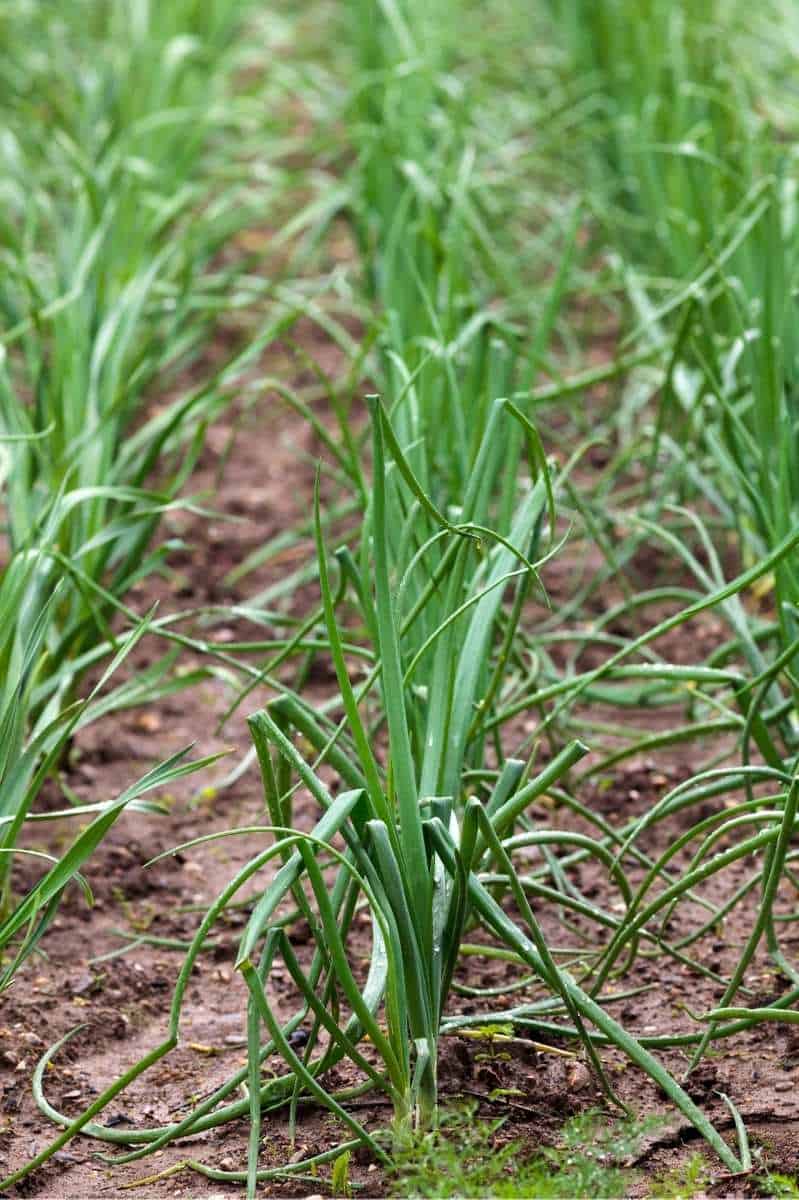
When should I plant onion seeds?
For spring planting (for an early summer harvest), we recommend you start your onion seeds 12-16 weeks before your last frost date. Onions are typically the very first plant we start from seed in January here in zone 6a/7b.
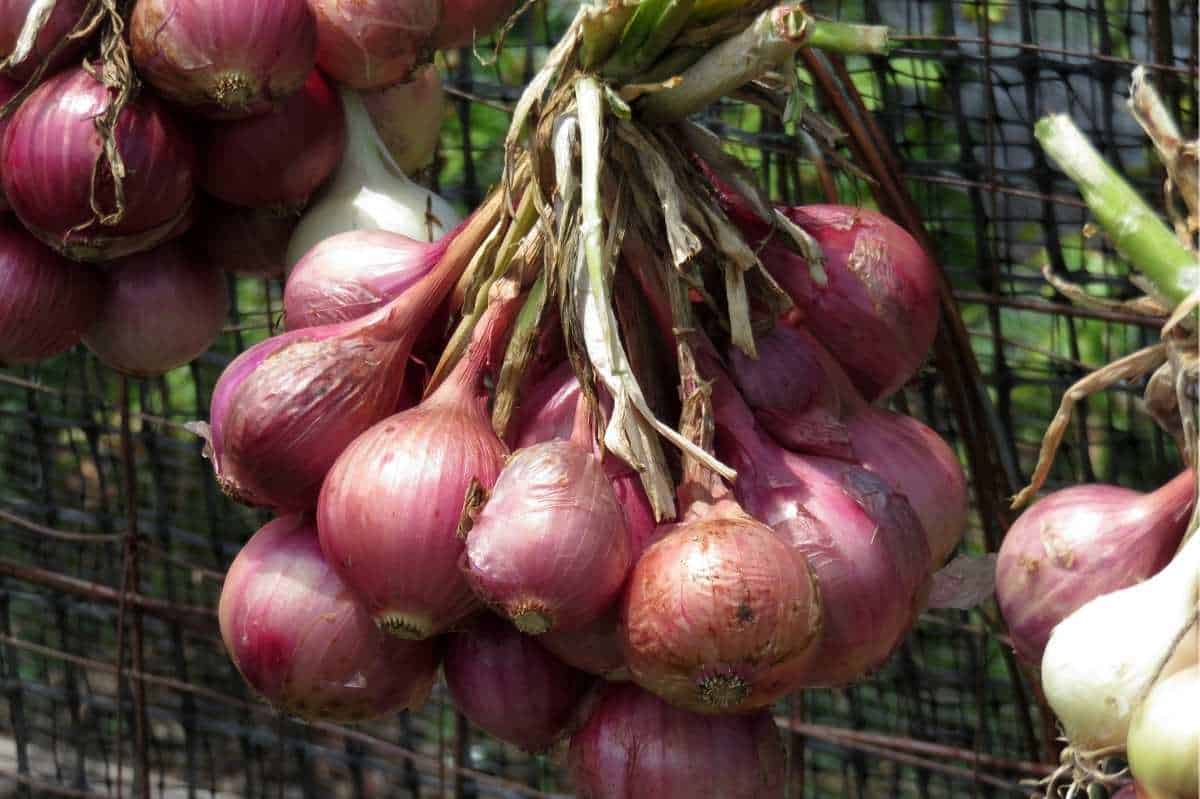
For fall planting (for overwintering for an early spring harvest), we recommend direct sowing seeds outdoors 6-8 weeks before your first frost. We plant our overwintered onion seeds mid-August here in zone 6a/7b.
Growfully Protip
Onions grow best with a soil pH of between 6.0 and 6.8. They prefer loose sandy-loamy soil with low clay content.
How to plant onion seeds for transplants
If you want to grow onion seedlings for your spring garden, you’ll want to start the seeds indoors.
To grow your own onion transplants:
- Fill a seed-starting tray with drainage holes with sterile seed starting medium—our go-to is 4 parts coco coir, 2 parts vermiculite, and 1 part perlite.
- Sow seeds by sprinkling them on the top of the soil. Then cover with a 1/4″ of fine soil. Press down to firm the seeds into place.
- Gently water the seeds, and keep the soil moist until the seeds germinate. The best way to do this is with a gentle mist from a spray bottle.
- Place the seeds somewhere where the temperature stays within 65°F to 75°F. The seeds should begin to germinate within 7-10 days.
- Once your seedlings are about 6″ tall, give them a haircut and clip off the top half of the leaves using sharp scissors—this encourages root growth. You can do this multiple times during the seed starting period.
- When it’s time to plant your seedlings in the garden, you can gently tease the roots of the onion plants apart using your fingers or a plastic fork (no worries, onions are very sturdy, even if they are still small). If you prefer, you can also pot up your onion seedlings into individual cells or pots, although we have found this step not to be necessary with this crop.
Growfully Protip
Onions are heavy feeders with shallow roots, so fertilization is important. Mix in a balanced, organic fertilizer and/or about an inch of compost before planting, and then feed regularly with compost tea or foliar fertilizer like fish emulsion and kelp.

How to plant onions for overwintering
Planting onion seeds in the fall garden for overwintering is hands-down our favorite way to grow onions here in the Growfully gardens. Overwintered onions mature earlier, they get larger, and they are entirely hands-off come spring—it’s always nice to take something off the garden to-do list in the springtime! Onions are very hardy and can overwinter everywhere except the coldest of climates with some mild protection in the form of thick mulch or low-tunnels.
Growfully Protip
Because onions are a biennial, your onions may shoot up scapes (the shoots that eventually become flower stalks) in the spring of the second year. When an onion produces a scape, it’s done pushing energy to the bulb, so it’s best to harvest the entire onion and enjoy it as a scallion or small bulb.
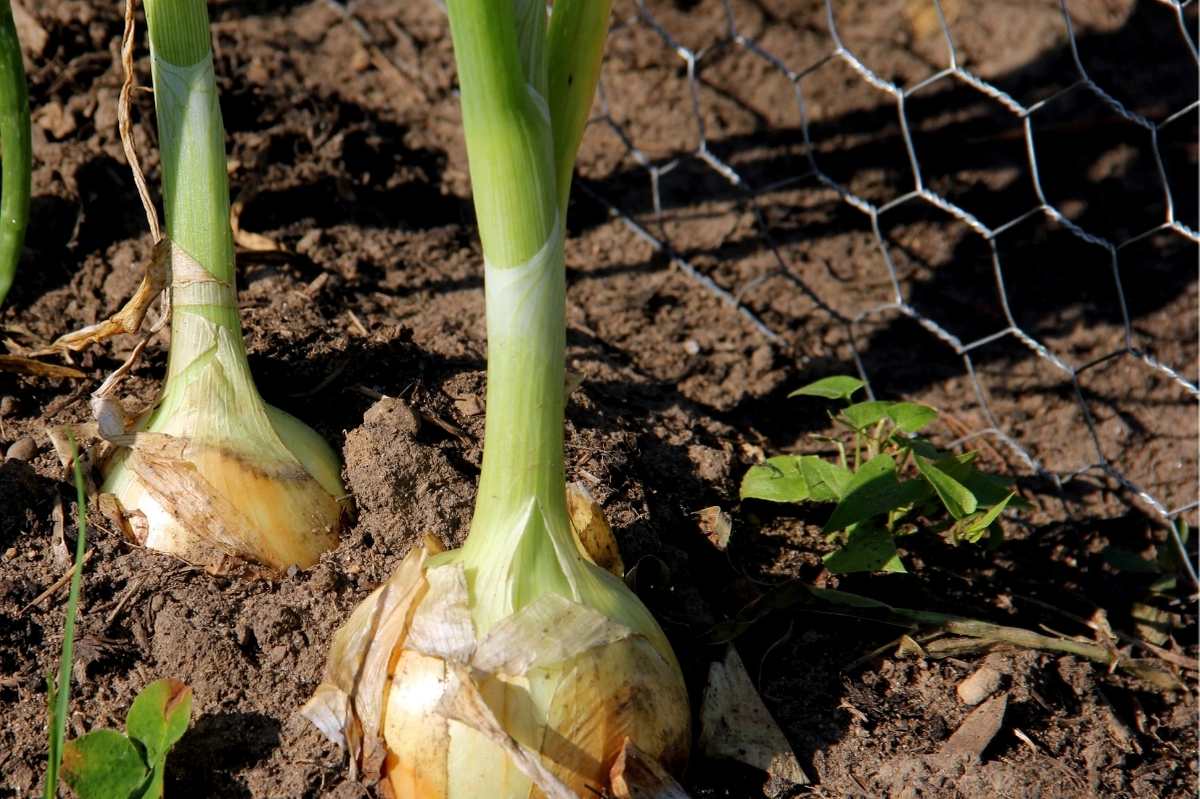
To direct sow onion seeds for overwintering:
- In late summer to early fall (about 6-8 weeks before the first frost in your zone), broadcast onion seed in a garden bed.
- Cover with about 1/4″ of fine soil, watering well.
- The onions should begin to germinate within 7-10 days.
- As the onions grow, harvest small baby onions to use as green onions to improve spacing (no need to do this all in the fall—you can do it again in the spring).
- Once the first heavy freeze has occurred, protect your onion plants under a heavy layer of mulch (in mild to moderate climates) or using a low tunnel with frost cloth in colder climates.
- When the spring weather warms, remove the mulch or low tunnels, and watch your onions flourish!
- Continue to harvest green onions until your onion plants are spaced about 6-8″ apart.
Growfully Protip
Because overwintered onions have finished their two-year lifecycle, they don’t store as well as their spring-grown younger cousins. You’ll want to use overwintered onions up quickly, and then plant another crop of spring onions if you want storage onions.
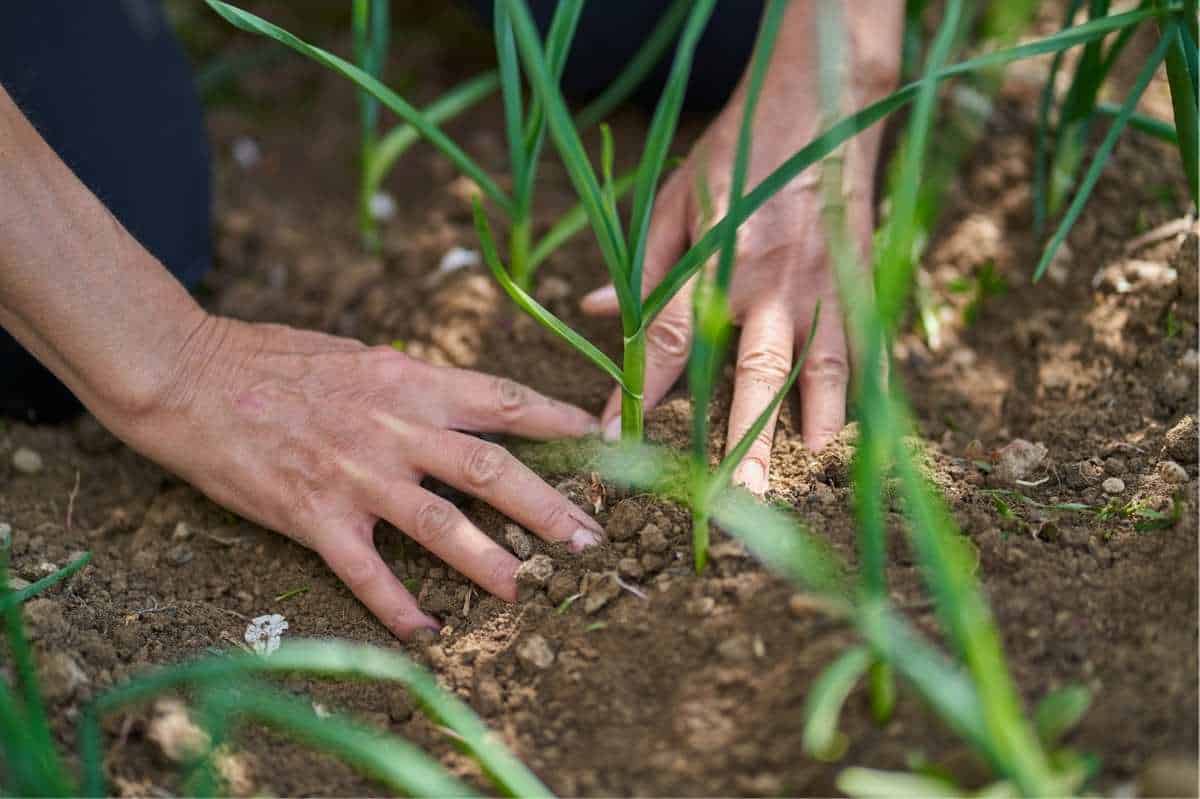
How do I plant onions sets or starts for spring growing?
Onion sets or starts hit the ground about 6-8 weeks before the last frost in your area. Because onions are so hardy, the timing can be fudged a bit, just make sure to harden off any seedlings you’ve sown before they head out into the garden for good.
Whether you have onion sets or starts, the steps for getting them in the ground are pretty similar:
- Once the soil can be worked in early spring, plant onion sets or starts/transplants about 1″ to 1 1/2″ deep in the soil.
- Individual plants or sets can be pushed into the soil, or if planting a large amount, you can dig a shallow trench, fill it with onions, and then backfill.
- Firm the onions into the soil well, then water.
- If your seedlings are larger or if you are planting onion sets, you can mulch the bed right away to regulate soil temperature, retain moisture, and reduce weed competition. Depending on the climate and typical behavior of your spring weather, you may not want to put out mulch until the spring rains have passed and the weather has warmed.
Growfully Protip
We prefer direct sowing seeds for overwintering, but to plant onion sets or seedlings for overwintering, plant them 4-6 weeks before your first fall frost.

Once you nail down the timing and select the right variety of onions for your latitude, you are sure to have success with your onion crop! You may never go back to store bought onions again. Happy growing!

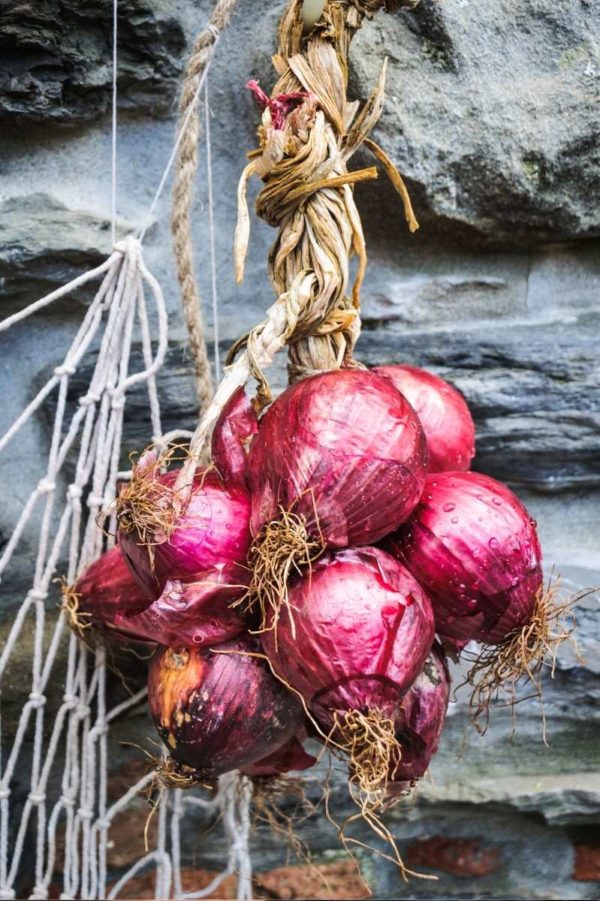






You can grow onions from seed during late fall, whether you live in a warm or cold climate. Other than autumn, early winter is best for hotter regions, while for cooler ones, early spring is better.
That was the best post I’ve read on onions! Thank you so much!
Bookmarked. Thank you!
Thnks alot but is there any neccesary for putting water when planting??
Watering the plants/seeds at the time of planting will help them settle in to the soil and give them a good start!
I read where some people trim there onion starts to increase the size of the onion bulb. I live in zone 5 and plant the first or second week of may. Do you trim your onions , or recommend it?
I do! Once they are about 6″ tall, I give them a good haircut.
FINALLY……
directions I can understand, remember and implement….
I grow beautiful big garlic, and tons of perfect shallots…. But for the life of me I can not grow a successful crop of onions from seed! I plant my garlic and shallots in the fall and harvest the next summer. It’s a great system and I’ve always wanted to include onions in the mix….now I feel like I’ve got the right information to get the results I want. Doesn’t hurt that I’m a 7b/6a zoner too, so it’s like getting information from a neighbor over the backyard fence!!!!
Glad we could help – happy planting!
My mom wanted to plant onion. But couldn’t able to find a proper guide. & this article is very much helpful. Can’t thank you enough. Stay blessed.
This is so helpful and detailed! I seriously come to your website for the most detailed posts because I need all the little details to fully understand something. Thank you!
So glad we can be helpful!